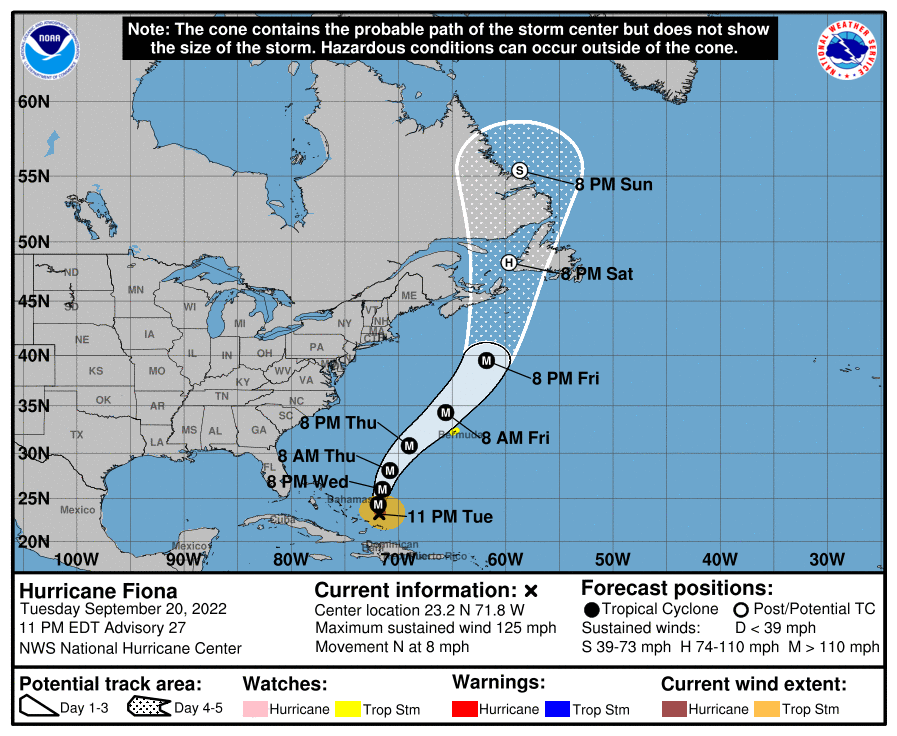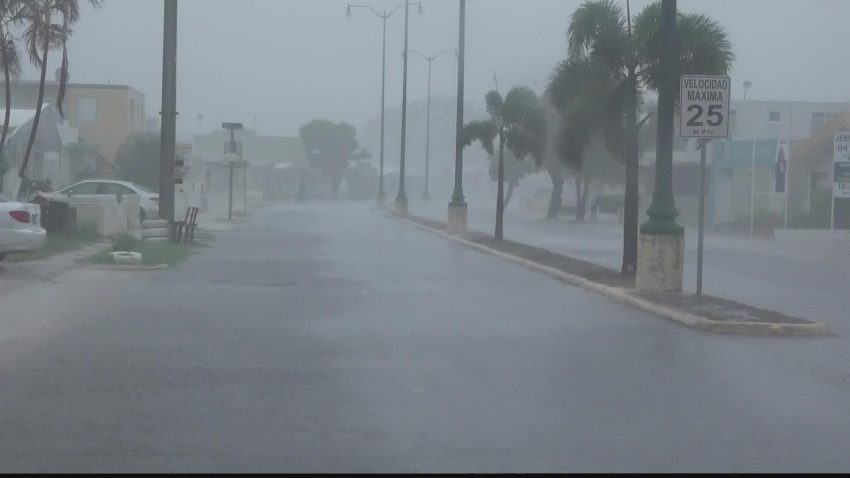After a very quiet start to the 2022 Atlantic hurricane season, with August not having a named storm for the first time since 1997, the tropics have suddenly come alive in the last several weeks. Hurricane Fiona has become the first storm of the season to cause widespread damage. The storm formed late last week, and quickly became a tropical storm upon reaching the island of Guadeloupe, where it claimed its first victim. Fiona then emerged into the Caribbean Sea, where she became a hurricane before making her first landfall near Punta Tocon, Puerto Rico on Sunday. A second landfall occurred near Punta Cana, Dominican Republic on Monday. Fiona lashed the islands of Turks And Caicos in the Bahamas with wind gusts up to 115 kph (185 kph) for most of Tuesday.
Conditions on Grand Turk, Turks & Caicos as Fiona passes by…. video from Tammarra Forbes pic.twitter.com/Fnzpuyywtq
— James Spann (@spann) September 20, 2022
The brunt of the storm, by far, has been felt across the island of Puerto Rico. At the height of the storm on Sunday, the entire island, inhabited by 3.2 million people, lost power. 80% of the U.S. territory remains without power as of Tuesday evening, while 70% of customers remain without potable water. Damaging wind gusts up to 113 mph (181 kph) are largely responsible for widespread power outages. However, the island’s infrastructure remains in a weakened state since Hurricane Maria pummelled the island in September of 2017, with many power plants failing to hold up during the storm.This is why Fiona, which was a Category 1 storm at landfall, is having similar effects on the island as Maria, which was a high end Category 4 storm at the time of landfall. Many homes still have blue tarps in place for roofs, 5 years post Maria.
Hurricane Fiona is hitting Puerto Rico, causing immense flooding that just tore down this bridge, mass power outages and more
— Read Class Struggle Unionism by Joe Burns (@JoshuaPotash) September 18, 2022
Yesterday was rough, these are some pictures of #Fiona’s damage to the island. As of this tweet 70% of the whole island is without power & water supply. Not easy times but we will get back up. Stay strong and safe.#PuertoRicoSeLevanta pic.twitter.com/URiUIJZ9SL
— QuintiniSatoshi.sol ®️ | Payleaf.io (@QuintiniSatoshi) September 20, 2022
Fiona’s winds have proven destructive, but the storm may perhaps be remembered most for the staggering amounts of rain it has produced. These rains have triggered catastrophic flooding and landslides island-wide, with over 1000 water rescues performed since Sunday. The highest rainfall totals have occurred in the southern half of the island, with Ponce, the second largest city, receiving 32 inches (812 mm). Many places have reported higher totals than during Hurricane Maria, while many places flooded during Fiona that did not flood during Maria.With a vast network of rivers and streams across the island, nearly every one of them has spilled over their banks, and many of them have reported record crests. One such example is the Guanajibo River, which crested at 29.2 feet (8.9 meters) on Monday morning, surpassing the record of 28.6 feet (8.7 meters) set during Maria. Current estimates are that damages from Fiona will amount to $10 billion across Puerto Rico.
Here’s a loop of the 5-day rainfall accumulation in Puerto Rico from Hurricane Fiona, which brought persistent heavy rain & wind to the Caribbean island, resulting in catastrophic flooding and damage. The average was 15.8 inches, with
the max reaching over 30 inches. #fiona pic.twitter.com/Qo9s8axzAf— NWS Weather Prediction Center (@NWSWPC) September 21, 2022
Heavy rainfall from Hurricane Fiona has produced catastrophic flooding across Puerto Rico, from a combination of slow movement, nearly stationary feeder bands, and upslope flow.
One of the USGS monitoring stations recorded nearly 30 INCHES of rain in just over a day: https://t.co/3N69GRJCxO pic.twitter.com/BuxOeowzW1
— Tomer Burg (@burgwx) September 19, 2022
Four additional deaths to the one in Guadeloupe have been attributed to Fiona, with two in Puerto Rico, and two in the Dominican Republic. It is possible that more may be reported in the coming days. The Dominican Republic and Turks And Caicos have sustained similar damage to that seen in Puerto Rico, although not quite as devastating. Fiona is now moving into the open Atlantic Ocean, with Bermuda and the maritime provinces of Canada in her crosshairs. The storm is likely to reach Category 4 status by Thursday.
Remarkable imagery of Hurricane Fiona tonight.
A whole lot of lightning in one of its outer bands. pic.twitter.com/gKCbW5cOFG
— Dakota Smith (@weatherdak) September 21, 2022

